Classification of dangerous goods
Classes
Substances (including mixtures and solutions) and articles are assigned to one of nine classes, depending on the type of hazard or the predominant type of hazard they represent. Some of these classes are divided into categories. The following classes and categories exist:
Class 1 — Explosive substances.
Category 1.1 Substances and articles that present a mass explosion hazard.
Category 1.2 Substances and articles that present a projection hazard but not a mass explosion hazard.
Category 1.3 Substances and articles that present a fire hazard and either a minor explosion hazard or a minor projection hazard, or both, but not a mass explosion hazard.
Category 1.4 Substances and articles that present no significant hazard.
Category 1.5 Very insensitive substances that present a mass explosion hazard.
Category 1.6 Extremely insensitive articles that do not present a mass explosion hazard.
Only Category 1.4 S (RXS) is accepted for transportation on A319/320/321 aircraft.
Example. Cartridges for rifles and pistols, some fireworks, safety fuses.

Class 2 — Gases.
Class 2 substances are assigned to one of three categories based on the primary hazard of the gas during transport.
Category 2.1 — Flammable gases — RFG.
Example. Lighters.
Category 2.2 — Non-flammable, non-toxic gases — RNG, RCL.
Example. Carbon dioxide, oxygen, fire extinguishers, aerosols.
Important. Transport of toxic gases on U6 flights is prohibited!

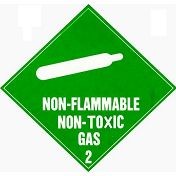
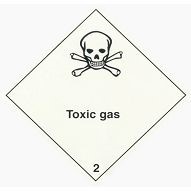
Class 3 — Flammable liquids.
Class 3 RFL includes the following substances:
- flammable liquids;
- desensitized liquid explosives.
Example. Paints, glues, varnishes, solvents, alcohols, gasoline.
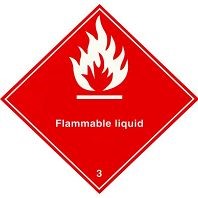
Class 4 — Flammable solids, substances liable to spontaneous combustion, substances that emit flammable gases when in contact with water.
Category 4.1 — Flammable solids — RFS.
Example. Sulfur.
Category 4.2 — Substances liable to spontaneous combustion — RSC.
Example. White and yellow phosphorus.
Category 4.3 — Substances which, in contact with water, emit flammable gases — RFW.
Example. Lithium.


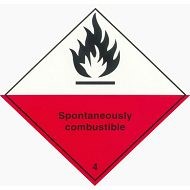
Class 5 — Oxidizing substances and organic peroxides.
Category 5.1 — Oxidizing substances — ROX.
Category 5.2 — Organic peroxides — ROP.

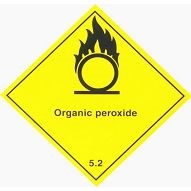
Class 6 — Toxic and infectious substances.
Category 6.1 Toxic substances — RPB.
Example. Arsenic, nicotine, cyanides, pesticides.
Category 6.2 Infectious substances — RIS.
Example. Bacteria, viruses, diagnostic specimens.
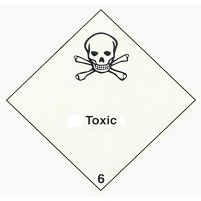

Class 7 — Radioactive material.
Category I — White — RRW.
Category II — Yellow — RRY.
Category III — Yellow — RRY.
Example. Cobalt, iodine, cesium.
Fissile material.
Example. Plutonium-239, uranium-233.
When transporting fissile material, in addition to the primary hazard label, the Fissile Material label must be used.
Important. Transport of radioactive materials on U6 flights is temporarily suspended!
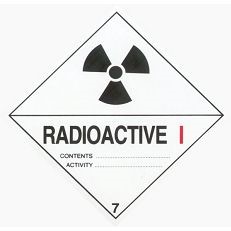


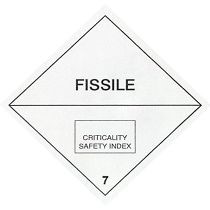
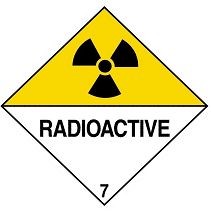
Class 8 — Corrosive substances.
Class 8 substances are substances that, by chemical action, cause severe damage to living tissue upon contact, or in case of leakage, cause physical damage to other cargo or transport equipment, or even their destruction — RCM.
Example. Acid batteries, mercury, sulfuric acid.
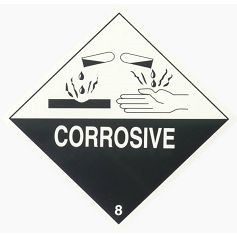
Class 9 — Miscellaneous dangerous substances and articles.
- Miscellaneous dangerous goods — RMD.
- Carbon dioxide, solid (Dry ice) — ICE.
- Magnetized material — any material whose magnetic field strength when packaged for air transport is 0.159 A/m or more at a distance of 2.1 m from any point on the surface of the package — MAG.
- Polymeric foam resin — RSB.
Note. The Miscellaneous Dangerous Goods label must be used for miscellaneous dangerous goods, dry ice, and polymeric foam resin. For magnetized material and dry ice, see labels in item 1.3.2.3.

